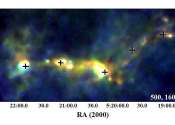Euclid is finding free floating planets in Orion, too
There are likely millions of "rogue" or free-floating planets (FFPs) spread through the galaxy. These planets, which aren't big enough to become stars but also aren't beholden to a star's gravity, are some of the hardest ...









